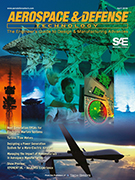Technical Paper
Static/Fatigue Structural Behaviour of Damaged Stiffened Composite Plates for UAS Applications
2013-09-17
2013-01-2161
Weight reduction in structural aerospace configuration is based both on specific material selection and on the selection of specific shape and sections. UAS structures need both the introduction of new advanced composites and the definition of light weight construction based on thin walled configuration.













